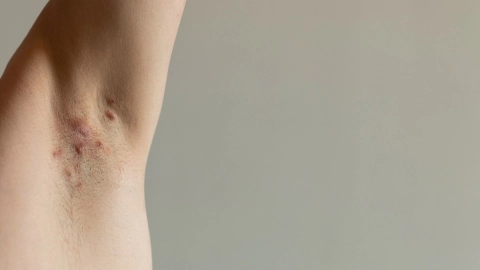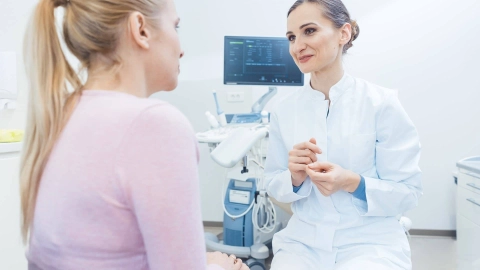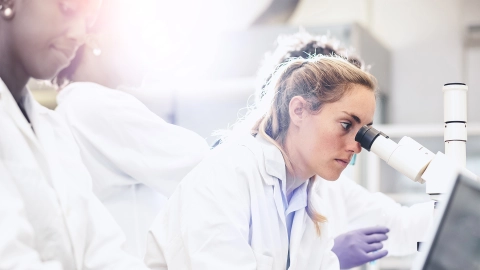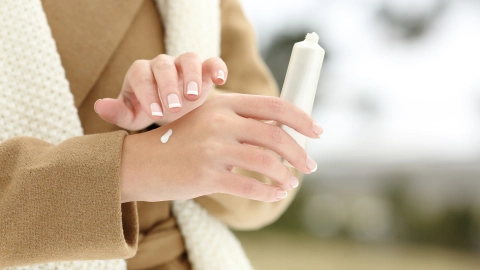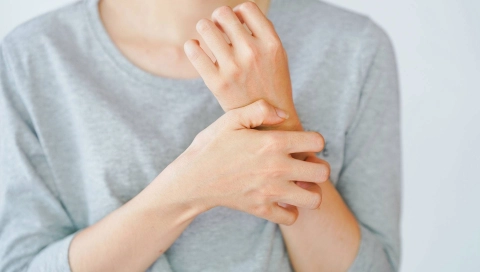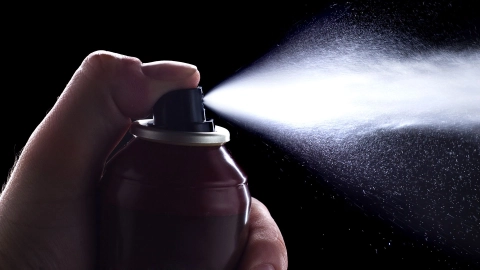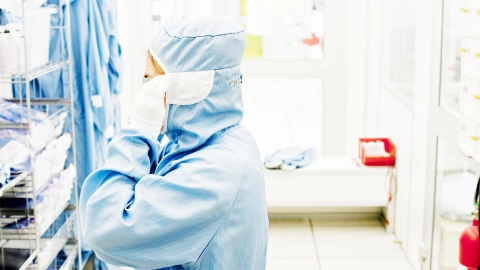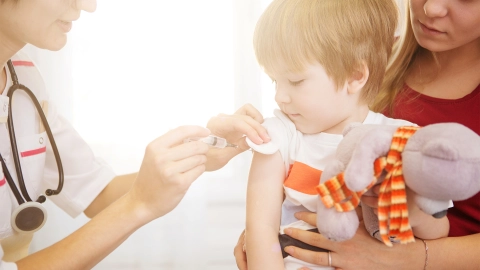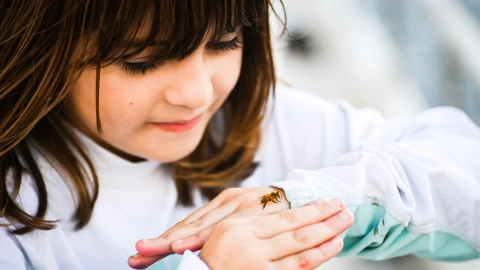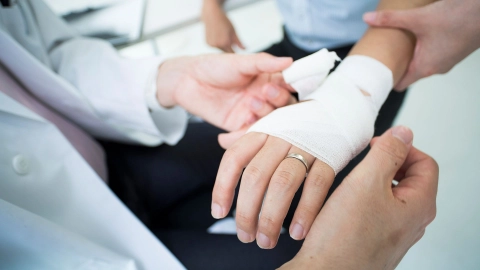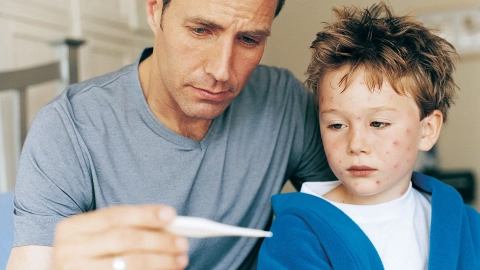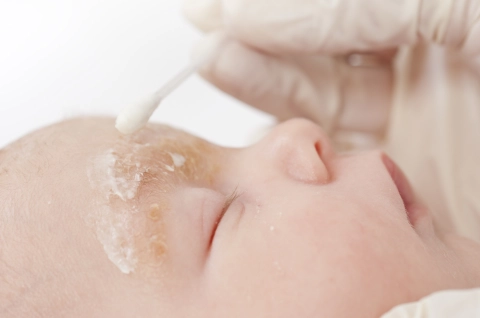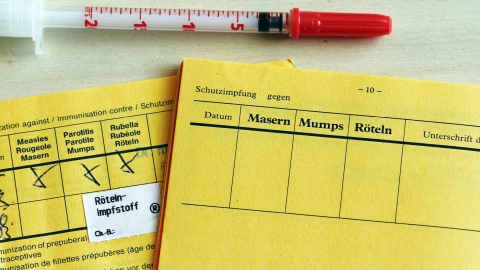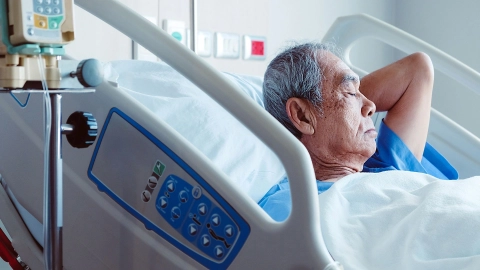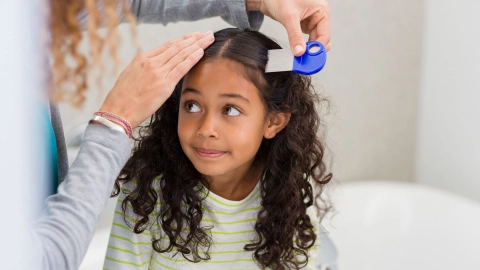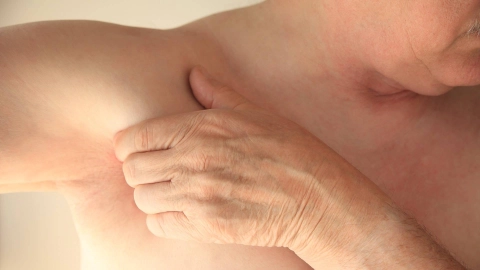Shingles (herpes zoster) is a painful viral skin condition. The viruses attack nerves and cause an inflammation that spreads over the skin.
Find out more
Roseola is a childhood illness involving a high temperature followed by a rash. The viral infection is usually harmless.
Find out more
Scabies develops as a result of a mite infestation in the skin. Severe itching is typical. Scabies is contagious with extended skin contact. However, the disease can be treated.
Find out more
Rosacea, a common inflammatory disease of the facial skin, causes redness, pustules, and small visible blood vessels on the face.
Find out more
Athlete’s foot (tinea pedis) can redden or crack the skin and cause itchiness. It can usually be effectively treated with creams. Keeping the feet dry is important with athlete’s foot.
Find out more
Most people experience warts at some stage of their lives. Warts are contagious and often very difficult to get rid of. Children and adolescents are at the highest risk of developing warts.
Find out more
Women who have very high levels of male sex hormones may have excess hair growth on their body and face. This condition, known as hirsutism, can be treated in various ways.
Find out more
Molluscum contagiosum is a virus causing small, wart-like papules (spots). It is a viral infection of the skin that mainly affects children.
Find out more
Acne inversa (hidradenitis suppurativa) is a chronic inflammatory skin condition. It causes issues such as painful nodules and abscesses. Find out what can be done to help combat it.
Find out more
Lichen sclerosus involves the appearance of white patches of skin that often become scarred, usually in the genital area. Severe itching is typical.
Find out more
Psoriasis is an inflammatory, non-contagious skin condition. It is characterized by reddish, flaky skin that may be itchy.
Find out more
Diabetic foot begins with dry feet and increased formation of calluses. Later, chronic wounds can develop, which are sometimes difficult to treat.
Find out more
People with neurodermatitis often get a rash and a nagging itching. This skin condition often occurs in children. Learn more about neurodermatitis and the treatment options.
Find out more
Melanoma skin cancer is a commonly occurring malignant tumor of the skin. In Germany, about 23,000 people develop melanoma annually. Melanoma responds well to treatment if detected early.
Find out more
Urticaria (hives) is a skin condition with which itchy wheals or a painful swelling of the hypodermis (angiodema) form. Read more about symptoms, progression, and treatment.
Find out more
Bruising that occurs in the elderly without any major external impact is known as senile purpura. This article explains more about the risk factors and prevention options.
Find out more
Boils (furuncles), carbuncles, abscesses and pimples are all linked to inflamed skin but differ slightly from one another. Medical treatment is often useful for boils.
Find out more
Many people don't feel comfortable in their own skin when it’s too dry. Sometimes, all that's needed is a few behavioral changes. In other cases, medical advice is required.
Find out more
Having constantly itchy skin means constant scratching. The longer the scratch-itch cycle continues, the more the skin is damaged. Suitable skincare measures and itch-relieving medication can help.
Find out more
With oral herpes, particular herpes viruses cause painful blisters known as cold sores to form. The condition heals on its own in 1 to 2 weeks. No treatment is normally required.
Find out more
The skin rash that typically occurs with ringworm (tinea corporis) has a ring-like appearance. It usually clears up quickly if treated with an anti-fungal skin cream.
Find out more
Fifth disease is one of the most common viral illnesses in children. Most adults are immune to it. Pregnant women who do not have immunity can pass the virus on to their unborn child.
Find out more
A contact allergy can cause severe skin reactions. The symptoms only become noticeable after 1 to 3 days.
Find out more
Anthrax is a rare disease. It is transmitted from animals to humans. Certain occupational groups are at an increased risk of contracting the disease. Read more about symptoms, causes, and treatment.
Find out more
Leprosy is a bacterial infectious disease that primarily occurs in South East Asia, South America, and Africa. Though leprosy is curable, there are still serious outcomes.
Find out more
Measles is a viral infection that causes fever and a skin rash. Serious complications can also occur. Vaccination offers protection against infection.
Find out more
In an animal allergy it is not the fur that causes a reaction, but proteins that are found in the animal’s saliva, for instance. Avoiding contact with the animal can help, as can taking medication.
Find out more
Scarlet fever bacteria (streptococci) cause an illness in children with symptoms such as a high temperature, sore throat, and a distinctive skin rash.
Find out more
Acne can be very distressing. Various things can be done to alleviate the symptoms. However, it takes time and patience to improve the complexion of the skin.
Find out more
Insect stings or bites usually leave behind nothing more than a small red mark. But someone who has an insect venom allergy will react very severely. This can even become a life-threatening situation.
Find out more
Erysipelas and cellulitis are caused by bacteria that break through the skin barrier due to an injury. With prompt treatment, a complete recovery is usually possible.
Find out more
Typical signs of chickenpox are an extremely itchy skin rash with red blisters and a slight fever. This viral infection most frequently affects children between the ages of 2 and 10.
Find out more
Impetigo (impetigo contagiosa) is an itchy and sometimes painful infection of the skin. It is especially common in young children.
Find out more
Medication can also have undesired effects. These side effects include allergic reactions. When this happens, the immune system reacts to ingredients found in the medication.
Find out more
Seborrheic dermatitis is a non-contagious inflammation of the skin. It causes red patches and oily flakes to form on the skin, especially on the face and scalp. Men are more often affected than women.
Find out more
Non-melanoma skin cancer is very common in Germany. This type of skin cancer is normally localized and only rarely spreads to other parts of the body. As a result, it is rarely life-threatening.
Find out more
Fungal nail infections are usually caused by an infection with skin fungi. They often affect the big toenails, which become brittle and discolored. Fungal nail infections rarely go on their own.
Find out more
Wounds do not always heal quickly. Many take a long time to heal or keep opening up. They are referred to as chronic open wounds.
Find out more
Hand, foot and mouth disease is a highly contagious virus, mainly affecting children under 10. People usually recover without any after-effects. Hygiene measures are important in preventing infection.
Find out more
Rubella is typically mild in children. If a pregnant woman without immunity becomes infected, there can be serious consequences for the child. Vaccination protects against the disease.
Find out more
Bed bugs can be found in mattresses, clothing and bed linen. Their bites are itchy but harmless. Read on to find out how you can protect yourself from bed bugs and get rid of them.
Find out more
Bedsores can be very painful and take a long time to heal. Treatment aims at preventing further pressure, for example through regular repositioning.
Find out more
Head lice are common in children of kindergarten/pre-school and elementary/primary school age. Although irritating, head lice are harmless. Special medicated treatments can kill them off.
Find out more
A corn develops when an area of skin is repeatedly exposed to pressure or rubbing. It usually disappears gradually if the rubbing and pressure stop.
Find out more
Diaper dermatitis is a common condition among infants and small children. It is also known as diaper rash, nappy rash or napkin rash. The condition can be prevented by frequent diaper changes.
Find out more
With pityriasis versicolor, round or oval patches develop on the skin, in particular on the neck, back, arms and chest. The rash is usually harmless and easily treated.
Find out more
Psoriatic arthritis refers to inflammation of the joints as a result of psoriasis. It causes stiff and painful joints.
Find out more
Hypertrichosis is increased hair growth – either on the entire body or only in certain areas. Depending on the cause, there are various treatment options.
Find out more
Ingrown nails are a common condition, often caused by an incorrect cutting technique. The type of treatment depends on the severity of the discomfort.
Find out more
Intertrigo is a rash that appears in the skin folds as a result of moisture and chafing. In many cases, the affected areas also become infected with yeast fungi.
Find out more
Phlebitis expresses itself as a painful, thickened blood vessel. The skin above the vessel is red. The symptoms disappear quickly again with appropriate treatment.
Find out more
Dyshidrotic eczema is characterized by itchy blisters that appear on the palms of the hands, fingers or soles of the feet. These are usually treated with anti-inflammatory ointments.
Find out more
Itchy round spots on the skin are typical of nummular eczema. Episodes often occur over years, but it can usually be treated successfully.
Find out more
Vitiligo is a disorder that causes the loss of the brown skin pigment melanin. It usually begins as white skin patches on the face and hands. Read more about its causes and treatment.
Find out more
Lichen simplex is a chronic skin condition that is accompanied by severe itching. There is often a pre-existing condition such as neurodermatitis. Here you can find out how to alleviate the symptoms.
Find out more



















